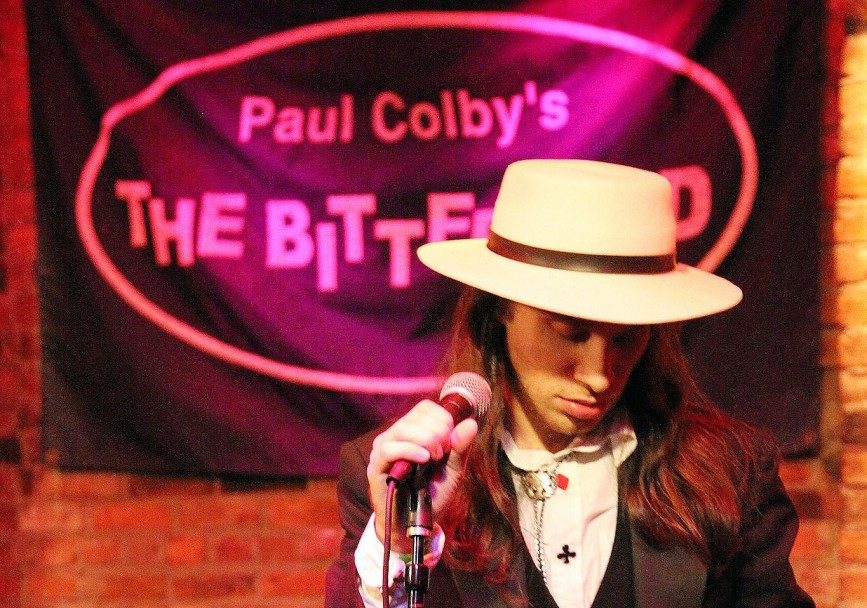On September 15th, I performed in the “Save The Bitter End!” live stream event, hosted by Phil Robinson’s Roomful of Sky Music. The event, which was featured in American Songwriter, was designed to generate awareness and raise funds to keep the historic venue open, despite not being able to function due to the pandemic. The Bitter End is one of the New York City’s few surviving venues from the 1960s, and it hosted acts like Bob Dylan and John Prine before they were famous. Its history and ambiance make it an important gem in the New York City music community. For a little more information on this, please watch this video by Offstage Tunes.

The Fear of Technical Difficulties on Stream
Before the event began, I was asked to find some talented acts who might be interested in joining the “Save The Bitter End!” event. One invitee politely declined the invitation due to concerns about potential technical difficulties and other variables that often come with online streaming. Those concerns came to fruition, with the event itself being plagued with every possible technical issue. It was as if the stream knew this was an important event, with many people watching, and it chose the most inopportune times to fritz out. As the general chaos and pandemonium ensued, a thought occurred to me: Is this really all that different than before?
The Similarity of Technical Difficulties on Stream and in Live Shows
Every sound check for all these live streams begins with the musicians asking if they could be heard – the technology we’re all using is not designed for music, so unless an act is prepared with an expensive professional system, the sound they hear in the room is not what comes across the audience’s speakers. The acts must rely on the other musicians to tell them what needs adjusting, if the guitar is too loud or too soft, if their voice can’t be heard, or if they’re maxing out the system.
I’m sure anyone who has come to any of my live shows have watched me pause between songs and ask how the sound is, and then watched my surprise as I received a note that something is too loud or too soft. Most venues aren’t prepared for the acts that pass though (the Bitter End being a charming exception), and the monitors don’t always portray what’s actually happening in the room. I’ve done full shows convinced that a particular instrument was absent from the mix, only to find out that it was the only thing heard in the room. We rely on the audience, specifically other musicians, to help us make adjustments on the fly in order that we can properly convey our music.
During the stream, I watched personal gear go awry – most notably a musician’s microphone steadily become quieter and quieter during a performance. Our resilient sound team worked to max the signal coming through, but before too long, the sound was entirely gone. To be sure, concerns about the sort of technical difficulties we encountered were why my friend declined my invitation to join the “Save The Bitter End!” show. While it was unfortunate that we had so many technical issues, these are things that all musicians dealt with in normal times. I have had instruments and microphones stop working entirely during live shows. On one memorable occasion that I would rather forget, I was electrically shocked on stage to the point that I had trouble remembering my own songs – all of which I had spent countless hours writing.
As I watched the choppy videos replay, saw the unflattering camera view of my face, listened to the stream glitch and lag, I was oddly comforted. While the entire world may be on its head, not much has really changed for musicians. We’ve traded sputtering amps, awful candid photos, and distracted sound technicians for an equally difficult digital world. Instead of a grumpy and aloof sound man, we have an unfeeling and uncaring Zoom. The game is the same, it’s just on a different level – but just like before the pandemic, we remain, we struggle, and we persevere (to some extent).
Progress Toward Saving The Bitter End
In better news, the live stream event raised $16,000 for the Bitter End, contributing to the over $25,000 raised since Roomful of Sky took over the Bitter End GoFundMe project. It was a pleasure to be able to play in an event with such talented fellow musicians for an important cause. Despite our technical issues, the event was an unmitigated success, and helped bring us one step closer to saving an essential New York City cultural treasure. You can find out more about Bitter End and this important campaign at the “No bitter end For The Bitter End” GoFundMe page.